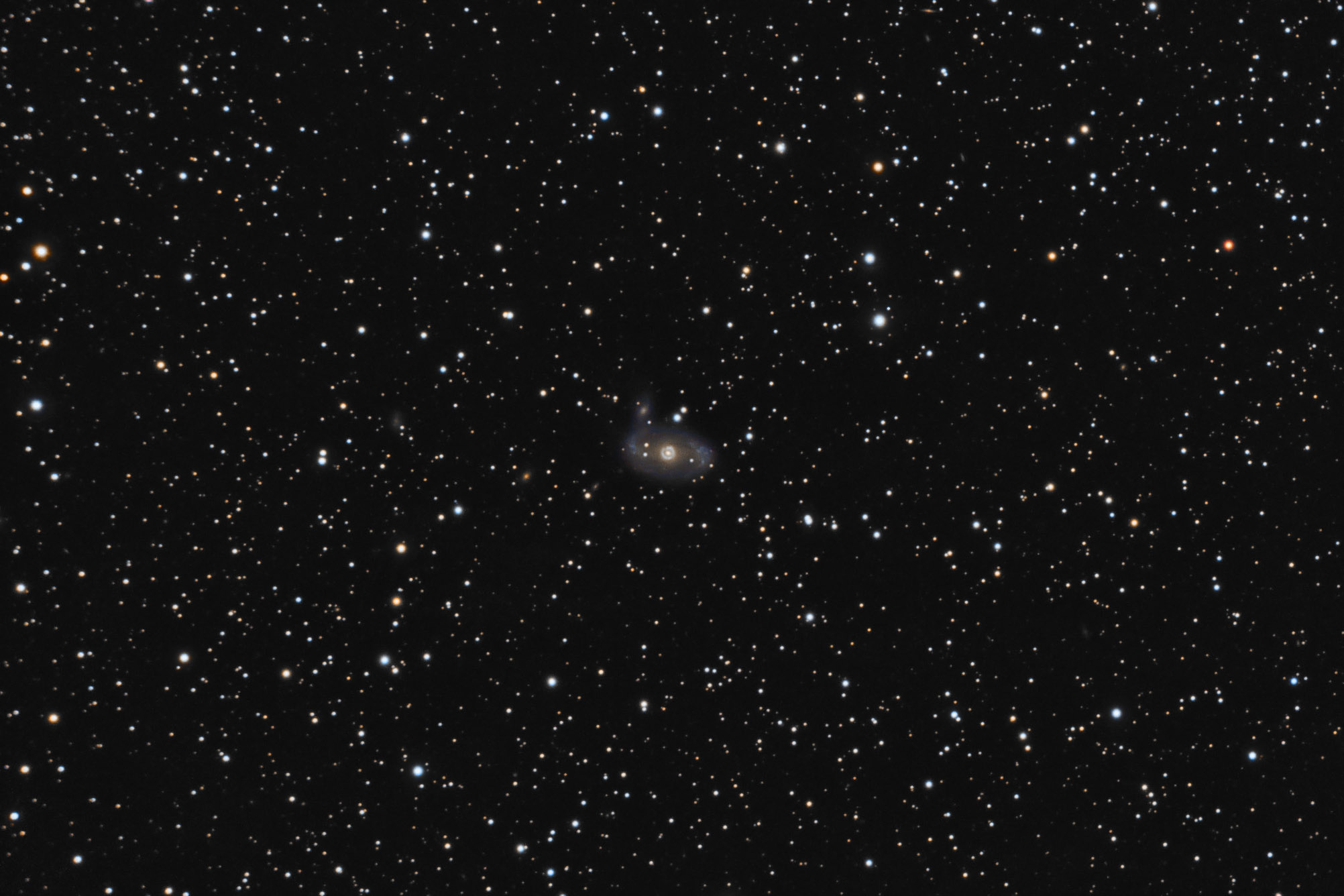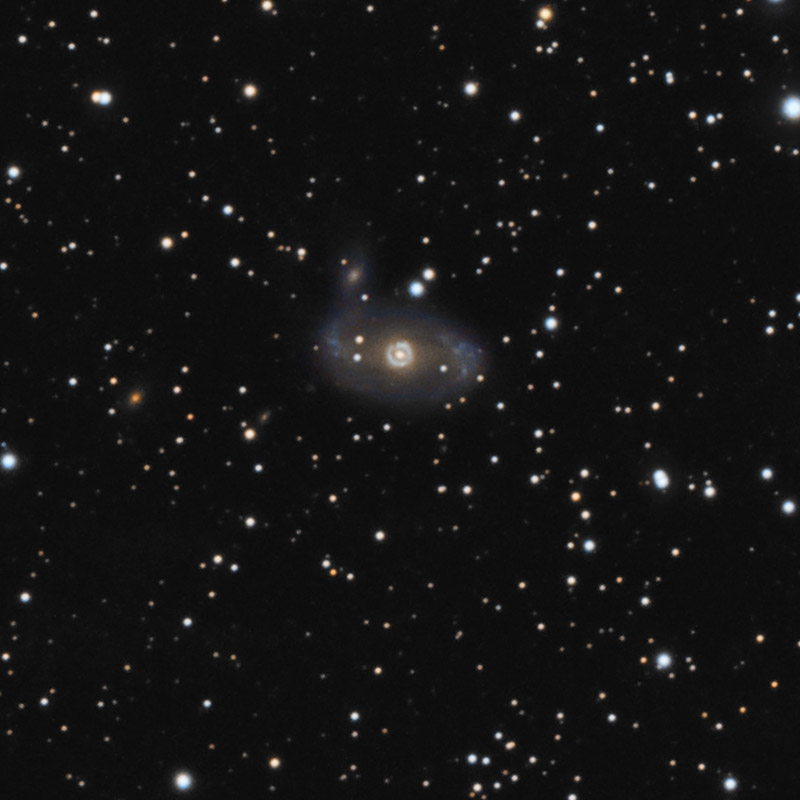| Description | Images |
Object name: NGC1343Designation(s): NGC1343, NGC 1343 is a barred spiral in far eastern Cassiopeia. So far east the very eastern end of it is in Camelopardalis. Non-redshift measurements place it about 30 million light-years distant while redshift, often unreliable close in says only 10 which I think highly inaccurate. NED and most others classify it as SAB(s)b: pec. I'd expect a notation of its inner ring about the core but that's not included in any classification even though it is a major feature of this galaxy. Many barred spirals have a fine, usually very hard to detect ring like this formed from gas flowing into the core fed by the bar structure. In this case, the bar structure is faint and the ring extremely blue and obvious. Though many images I found of it overstretch the core to the point that the ring is lost. There is a galaxy on its northeastern edge, HFLLZOA I126 (Hau+Ferguson+Lahav+Lynden-Bell Zone of Avoidance Galaxies catalog). NED has no redshift or other distance data on it so I can't say if it is a true companion or not but there does appear to be a bridge of stars connecting the two. The CGPG mentions this saying: "Bright neutral ring-shaped core. Large elliptical halo with plume [north-east]." Notice no mention of the second galaxy. Or is this second galaxy just naturally elongated giving the impression of a bridge that isn't there? Either seems possible to my eye. Related Designation(s):2MASS J03374917+7234167, 2MASS J03374970+7234167, 2MASS J03374975+7234191, 2MASX J03374965+7234168, 2MIG 0443, 87GB 033222.0+722443, 87GB[BWE91] 0332+7224, AKARI J0337506+723423, CGCG 0332.4+7224, CGCG 327-005, CGPG 0332.4+7224, GALEXASC J033749.59+723417.8 , HFLLZOA G134.74+13.63, HFLLZOA I125, HIJASS J0337+72, IRAS 03324+7224, IRAS F03324+7224, MCG +12-04-001, NGC 1343, NGC1343, NVSS J033749+723419, PGC 013384, UGC 02792, UZC J033749.8+723416, VII Zw 008, [WB92] 0331+7221 NED02, |

